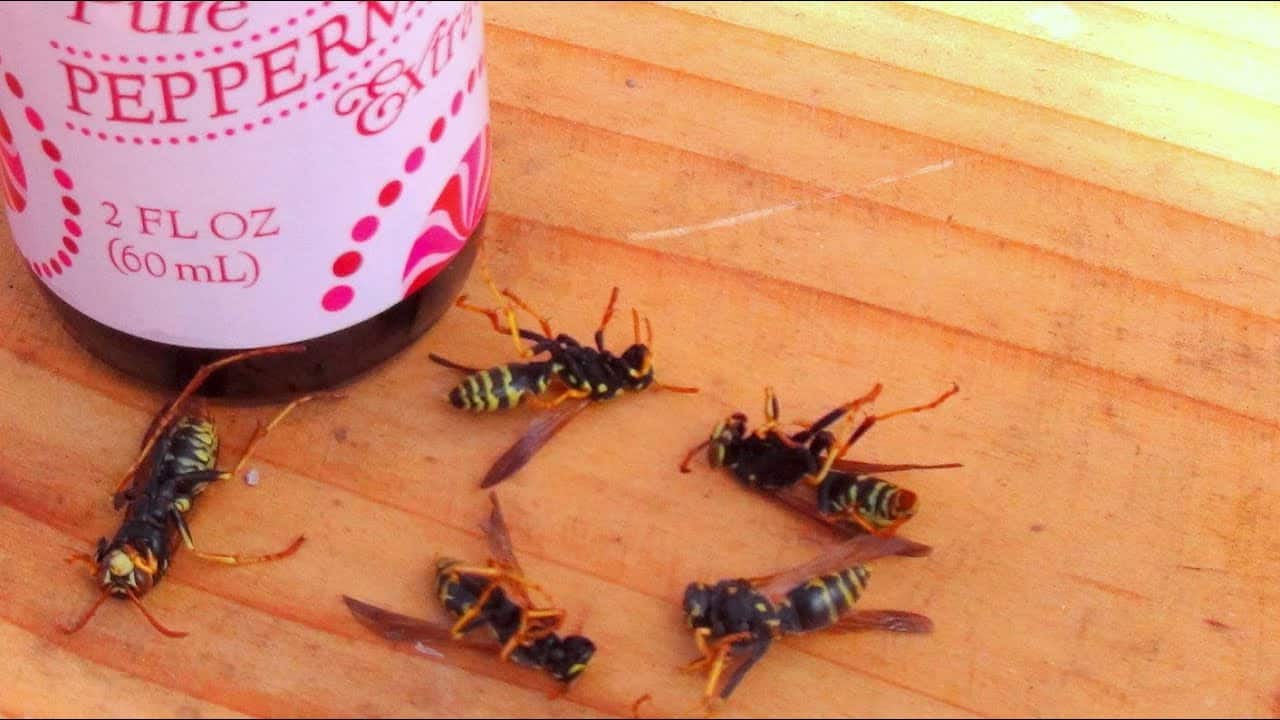Table of Content
Things like insulated walls, crevices, and cracks shelter wasps from potential predators and harsh elements. If you have wasps in your yard, you’re probably wondering why they’ve chosen to pester you. Fortunately, there are a couple of ways to tell wasps and bees apart.

The problem is that commercial insecticides don’t distinguish between wasps and other flying insects. The cons of using home made remedies is that they may not be as strong or effective as commercial repellents, and they can be dangerous if used incorrectly. Always take care when handling chemicals and never spray directly at a wasp nest. If you’re unsure about whether or not a home remedy will work, it’s always best to call an exterminator.
Treat future nesting areas
Remain persistent and repeat the use of these remedies and you will soon have a home and garden free of wasps. Especially when they enter your home, they are equally difficult to handle and trap. They will fly non-stop and keep buzzing as they find their way out of the room. If the wasp fails to find a way out, it can get infuriated and attack anybody who is in the room.
Wasps will find their way to the tub and drown in it. The wasps will get trapped in the tub and eventually die. However, bear in mind that killing the wasps by this method requires a lot of patience. Soap and water are a great defense against small wasp nests.
Signs of an Allergic Reaction
Adjust the sprayer to emit a single solid stream. Aim at the base of the nest, where it attaches to the house. The nest should soften and fall in a short amount of time.
Take one cup water and add equal amounts of vinegar to it. Now mix the two ingredients well and transfer the solution to a spray bottle. You can spray this solution in areas where wasps are commonly seen. This method will not be very effective in killing the whole wasp nest, but it helps in getting rid of the wasps that come your way. While home remedies are nice and inexpensive, sometimes it’s best to bring out the big guns. In this case, the big gun is a can of spray pesticide that will allow you to attack the nest from afar.
How to get rid of yellow jackets
Commercial sprays are effective and formulated so that you can stay at a safe distance when committing insecticide. They’re commercially available pretty much wherever you look. Spraying the entrance, especially if you’re using insecticidal foamers, makes sure that any wasps thatdoget outcome into contact with the spray. When spraying, you want to hit the nest entrance first. The wasps are going to scramble like fighter pilots hearing an alarm and trying to launch to deal with whatever’s attacking their hive. It won’t be perfect, but it’ll be better than nothing.
Here are a few natural options that work just as well but will keep your garden, pets, and kids safe from leftover or wind-blown insecticides. These kinds of wasps do build nests, but mostly they’re filled with eggs and larvae . You can purchase a non-toxic wasp trap that is made from synthetic material that works by luring worker wasps into a trap. Most gardening stores will carry a non-toxic wasp trap. When making your own homemade wasp killer, you will want to use about ¼ cup of dish wash mixed with hot water in a hose-end sprayer . The best way to get rid of wasps is to prevent them from making their home near yours.
Ways To Get Rid Of Wasp Nests (Without Getting Stung)
Another homemade wasp repellent can be made with essential oil blend with clove, lemongrass and geranium essential oils. Organic wasp insecticide sprays make of food-grade ingredients like peppermint oil help keeping wasps away. They may smell pungent due to the essential oils but are not harmful. But the best part is that we do not have to use harsh sprays to get rid of wasps.

By the end of the summer, a wasp nest may grow to reach hundreds or thousands of wasps. At these numbers, wasps can become dangerous by September1. Unlike honeybees, which gather flower nectar and pollen, wasps are meat eaters. While bees are known to not sting without being provoked, a wasp may sting without any real good reason. A wasp sting is also more painful than a bee sting1. They may also sting more than once as they do not leave their stinger in the skin.
Social wasps are territorial and aggressive about it, so finding a nest is a big deal. The trick to applying it is to load it into a bulb applicator and then spray the entrance to the wasp nest so that any wasps coming out are coated with the dust. Bees can’t stand the stuff, but wasps can’t get enough. All you need is a big bowl of water, apple cider vinegar, a little sugar, and a little dish soap. To keep repelling those bugs, just reapply your peppermint solution once a week during the wasp season in any areas you’ve seen wasps.
Take 500 ml of water and add about 30 drops of peppermint oil to it. You must add some shampoo or dish soap into the solution so that the peppermint sticks well. After some time, you will find that all wasps are gone from your yard, garden or home.
Cinnamon – Cinnamon is a great home remedy for getting rid of wasps. Simply sprinkle some cinnamon around areas where you’ve seen wasps and they’ll stay away. Summertime is a great time to be outside, but for some, it also means dealing with pesky wasps. There’s nothing quite like the sight of wasps buzzing around your picnic table, ruining your outdoor meal. Unfortunately, these pests can be a real nuisance when they’re not wanted. In case of large nests, you may use a garden hose by just attaching the hose-end sprayer and filling it with same dish soap solution.

Wasps are indeed scary and their stings are rather painful too. It can take days for the pain from a sting to reduce. Many tend to have allergic reactions to the sting of the wasps and the allergy can aggravate to dangerous levels. Wasps have a strong sense of smell, which allows them to locate food. Wasps do hate certain scents, including peppermint, lemongrass, vinegar, bay leaves, scented herbs, and essential oils.
Wasps are commonly active during springtime and the first few days of summer. They build their nests under a shade as a way of avoiding heat or cold. During such time, they get inside the house as soon as they spot an opening. Wasps are tiny insects with body measurements ranging from 10 to 25 mm (.4 to 1.6 inches). They are common in urban and rural areas, homes, farmlands, and even in abandoned and underground buildings. Sometimes, wasps can be mistaken for bees and hornets.
The pros of using home made remedies for killing wasps is that they are usually cheaper than buying commercial repellents, and they are often just as effective. Additionally, many home remedies use ingredients that you likely already have on hand, so you don’t have to go out and buy anything special. Cloves – Cloves are another great home remedy for getting rid of wasps. Simply place a few cloves in a bowl and set it out near areas where you’ve seen wasps. The strong scent will deter them and keep them away.

No comments:
Post a Comment